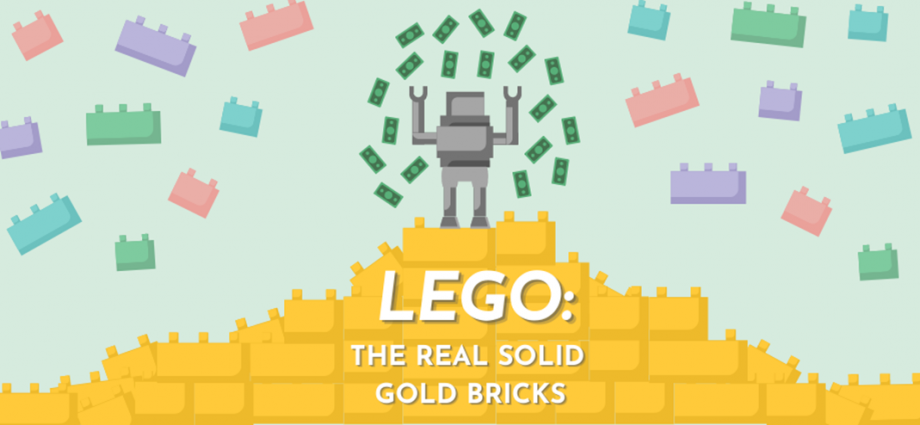Author: David Cooke, Graphics: Nina Tagliabue
The BRB Bottomline
LEGOs are not just children’s toys for building, but also instruments that can be used in building your investment portfolio of tomorrow.
When one thinks of LEGOs, it is unlikely they equate those little plastic bricks with dollar signs. Rather, one is more likely to reminisce nostalgically about playing with them in their youth or have flashbacks to the indescribable pain one feels when stepping on a rogue brick. However, these little torture blocks are garnering increasing attention due to their investability. Both AFOLs (Adult Fan Of LEGO) and shrewd investors alike are cashing in on their value. According to a survey done by Moscow’s Higher School of Economics, “In a sample period between 1987 to 2015, researchers found that LEGO investments returned an average of at least 10-11% annually, which is a stronger rate of return than stocks, bonds, gold and many other collectible items like stamps or wines.”
Where LEGO’s Value Comes From
This value can be partially attributed to the strict limitations imposed on LEGOs by their parent company, which controls the production and selling of LEGOs. Each LEGO set is micromanaged with only a predetermined amount produced and a predetermined strict retirement date at which the set will stop being available for sale. Once the sets have been retired, their prices skyrocket.
Tracking LEGO’s Value
Additionally, there are multiple websites solely dedicated to tracking the value of LEGOs and their expected returns, the most well-known being “Brick Economy.” This website not only estimates expected returns much like the stock market, with prices going up the longer a set has been out of production, but the site also has an entire section dedicated to “Sets Retiring Soon” which tracks sets that are on their last legs of production and will likely be profitable, allowing buyers to get ahead.
Perhaps the most famous example of this phenomena is the 7,500+ piece LEGO Star Wars Millennium Falcon set. This retails at $799 dollars and was almost immediately sold out after its 2018 debut. However, now the set is widely available with an expected retirement occurring in mid 2022 according to Brick Economy. With an anticipated price increase of well over 7% annually, it is expected to reach just under $1,200 by 2026.
Not Your Average Collectors Item
What makes LEGOs different from other products considered investments is widespread availability. While sneakers like Jordans or specific sports cards are rare and hard to obtain in order to derive their value, Lego Sets are not. Even a Lego set whose value is expected to skyrocket is still easily accessible while in production. The aforementioned Millennium Falcon can be purchased both at Walmart and Target. Thus, an investment in LEGOs is one that does not have a quick turnaround; instead, like a great Cabernet, a LEGO set will only improve with age.
“Nice Bricks” – Everyone
If you’re looking for a place to put your money and hoping for a return, skip the usual avenues like the bank, real estate, burying it in the backyard, relying on the latest cryptocurrency, or, of course, gold. Rather, invest in something timeless and universal: the truly most available bricks, LEGOs.
Take-Home Points
- Legos are a sound investment and should be viewed as such.
- Through utilizing websites such as Brick Economy LEGOs value can be tracked.
- Target sets that are retiring soon.

